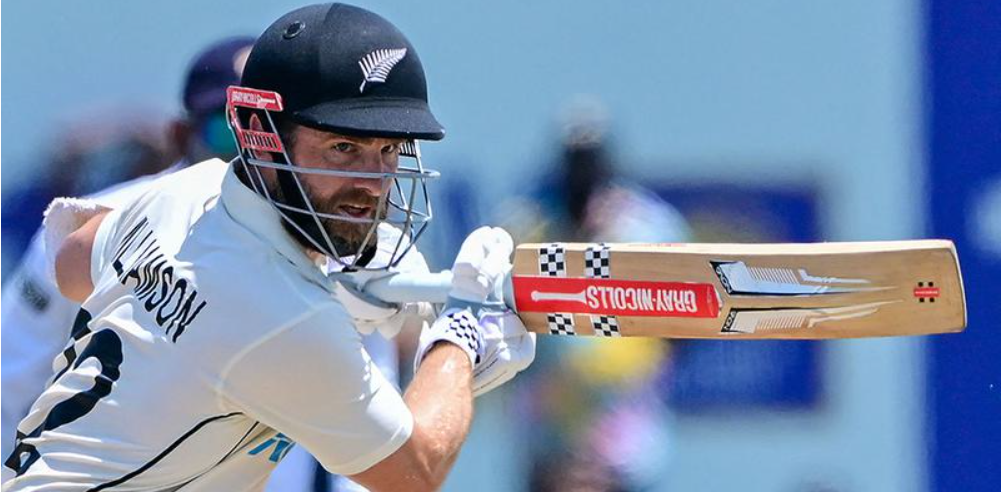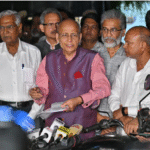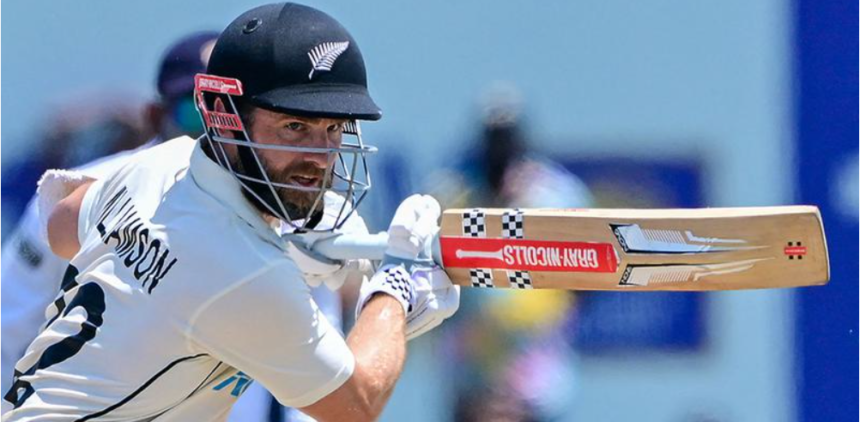New Zealand cricket captain Kane Williamson, one of the most iconic figures in the sport, has been ruled out of the second Test of an ongoing series, much to the dismay of fans and teammates alike. Williamson’s absence is not just a personal blow to his aspirations but also a significant challenge for the New Zealand team, which has long relied on his leadership, batting prowess, and tactical acumen. This development has sparked discussions about the team’s performance without him, the possible replacements, and the broader implications for New Zealand’s strategy in the current and upcoming series.
In this article, we’ll explore the reasons behind Williamson’s absence, his role and influence on the team, the immediate and long-term consequences of his absence, potential tactical adjustments, and how New Zealand can bounce back without their star player.
1. Kane Williamson’s Absence: An Overview
A. Injury Woes
Williamson’s exclusion from the second Test stems from injury concerns that have troubled him over recent months. The New Zealand captain has been struggling with a persistent elbow injury—commonly referred to as a “tennis elbow”—that has affected his performance and ability to participate in longer formats of the game. The ongoing pain and discomfort in his elbow have led medical staff to recommend further rest and rehabilitation, rather than risking aggravation by playing a full Test match.
This injury is particularly concerning given Williamson’s history of missing matches due to similar issues. His injury management has become a key focus for the New Zealand Cricket Board, who are keen on preserving his fitness for future series and, more importantly, major tournaments like the ICC World Cup.
B. Recurring Fitness Struggles
Kane Williamson has dealt with multiple injuries over his illustrious career. While he has shown tremendous resilience in returning to form time and time again, his persistent elbow injury has been a nagging issue that raises questions about his future in Test cricket. The injury sidelines him at a critical moment, as New Zealand aims to regain momentum in the Test series.
For a player of Williamson’s caliber, fitness issues have broader implications—not only do they rob New Zealand of a seasoned leader, but they also affect team morale and strategic planning. His absence leaves a void in the batting order, one that is hard to fill given his unparalleled consistency and experience. 
2. Williamson’s Influence on New Zealand Cricket
Kane Williamson is often described as the backbone of New Zealand cricket. His technical brilliance, combined with an unflappable temperament, makes him one of the most formidable batsmen in the world. But it’s not just his batting that makes him invaluable; Williamson’s tactical intelligence and leadership have turned New Zealand into a cricketing powerhouse on the global stage.
A. Leadership and Tactical Insight
As captain, Williamson has led New Zealand to numerous victories, including the team’s first-ever ICC World Test Championship title in 2021. His leadership style is calm, collected, and often lauded for being inclusive and empathetic. Under his captaincy, New Zealand has developed a reputation for playing hard but fair, with a focus on team unity and discipline.
Williamson’s tactical awareness during a Test match is particularly impressive. Whether it’s rotating bowlers, setting field placements, or making bold decisions on when to declare, he has consistently demonstrated an ability to think several steps ahead of the opposition. His strategic foresight will be sorely missed in the second Test, where a strong and experienced leader is crucial for making on-field adjustments. 
B. Batting Prowess
With over 7,500 Test runs to his name at an average of over 53, Williamson is a cornerstone of New Zealand’s batting lineup. His ability to anchor an innings, absorb pressure, and grind out long stays at the crease has often been the difference between victory and defeat for New Zealand.
He is particularly adept at handling challenging conditions, such as seaming pitches or turning tracks, which makes him an invaluable asset in Tests, especially in overseas conditions. His calmness under pressure allows younger players to build their innings around him, a dynamic that will be sorely missed by the team in his absence.
3. Consequences of Williamson’s Absence
The loss of Williamson for the second Test has significant implications, both in terms of team composition and the overall series outlook. Without him, New Zealand will need to make crucial adjustments to their lineup and strategy.
A. Impact on Batting Lineup
Williamson’s absence creates a significant gap in New Zealand’s top order. The team has traditionally relied on him to not only provide stability but also score the bulk of the runs in tough situations. His ability to play long innings also allows middle-order players to bat more freely, without the pressure of early wickets falling.
Without Williamson, other key batsmen like Tom Latham, Henry Nicholls, and Ross Taylor (if selected) will have to step up and take greater responsibility. However, none of these players possess the same level of consistency and grit that Williamson brings to the table. The younger and less experienced batsmen will also need to cope with the pressure of filling the void left by their captain.
B. Psychological Effect on the Team
Williamson’s absence isn’t just a tactical loss; it has psychological ramifications as well. The team looks up to Williamson as a leader who can weather difficult situations. His calm demeanor often has a stabilizing effect on the dressing room, particularly when things aren’t going according to plan.
Without their leader, the younger players may feel the pressure more acutely, especially if the team finds itself in a challenging position during the match. The lack of Williamson’s reassuring presence on the field may result in increased stress for key players, which could lead to lapses in focus and poor decision-making.
C. Increased Pressure on Bowlers
In the absence of Williamson’s batting stability, the spotlight will turn to New Zealand’s bowlers, who will need to shoulder more responsibility in ensuring that the team remains competitive. New Zealand’s bowling attack, led by Trent Boult and Tim Southee, is known for its effectiveness, but the pressure will be immense as they may have to compensate for the possible lack of runs on the board.
The bowlers will have to be on point, as they cannot rely on a big total to provide breathing room. This added pressure could lead to fatigue and overexertion, increasing the risk of injuries or loss of form over the course of the Test match.
4. Tactical Adjustments and Possible Replacements
New Zealand’s think tank will need to make crucial decisions regarding team selection and strategy to overcome the absence of their captain. The question of who steps in as a replacement and how the team balances its batting and bowling departments will be key to their chances of success.
A. Captaincy Replacement
Tom Latham, who has served as Williamson’s deputy in the past, is the most likely candidate to take over the captaincy for the second Test. Latham is a capable leader with experience leading the team in Williamson’s absence, particularly in shorter formats. While Latham doesn’t possess Williamson’s tactical acumen, he is known for his composure and clear-headed decision-making.
B. Batting Replacement
Finding a replacement for Williamson’s position in the batting order is no easy task. However, New Zealand has a few options. Will Young, who has shown promise in previous outings, is a strong contender to fill the void. Though relatively inexperienced, Young has the technique and temperament required to play in the top order.
Devon Conway, a prolific scorer in limited-overs cricket, could also be asked to step up in Williamson’s absence. His aggressive style of play can provide New Zealand with an attacking option, particularly if the team finds itself in a situation where quick runs are needed.
C. Tactical Shifts
New Zealand may also need to adopt a more conservative approach in Williamson’s absence. With their premier batsman unavailable, they could opt for a more defensive strategy, focusing on batting time rather than piling up runs. The team’s bowlers, meanwhile, will need to be more aggressive, looking for early breakthroughs to compensate for the weakened batting lineup.
5. Long-Term Implications for New Zealand
Williamson’s recurring injuries raise concerns about his long-term availability, particularly in the demanding format of Test cricket. If he continues to struggle with injuries, New Zealand will need to start planning for a future where they may need to manage without their captain in certain series.
A. Leadership Transition
While Williamson remains an integral part of the team, the ongoing injury concerns may necessitate a gradual transition of leadership to someone like Tom Latham or even a younger prospect who can lead the team in the long run. This transition will need to be carefully managed to ensure the team retains its competitive edge.
B. Strengthening the Bench
Williamson’s absence highlights the importance of having a deep bench of players who can step up when needed. New Zealand’s selectors may need to invest more in grooming young talent, particularly in the batting department, to ensure that the team remains competitive even when key players are unavailable.
Conclusion
Kane Williamson’s absence from the second Test is a significant setback for New Zealand, both in terms of leadership and batting strength. His role as captain and premier batsman has been crucial to New Zealand’s success, and his absence will undoubtedly be felt. However, the team has enough talent and resilience to overcome this challenge if the right tactical adjustments are made.
With experienced players like Tom Latham stepping into leadership roles and young talents like Will Young and Devon Conway being given opportunities, New Zealand has the chance to demonstrate their depth and versatility as a team. While Williamson’s absence is a blow, it also presents an opportunity for others to rise to the occasion and prove their mettle. ALSO READ:- Black Holes in Webb Data Allay Threat to Cosmology’s Standard Model: A New Perspective on the Universe’s Evolution 2024





